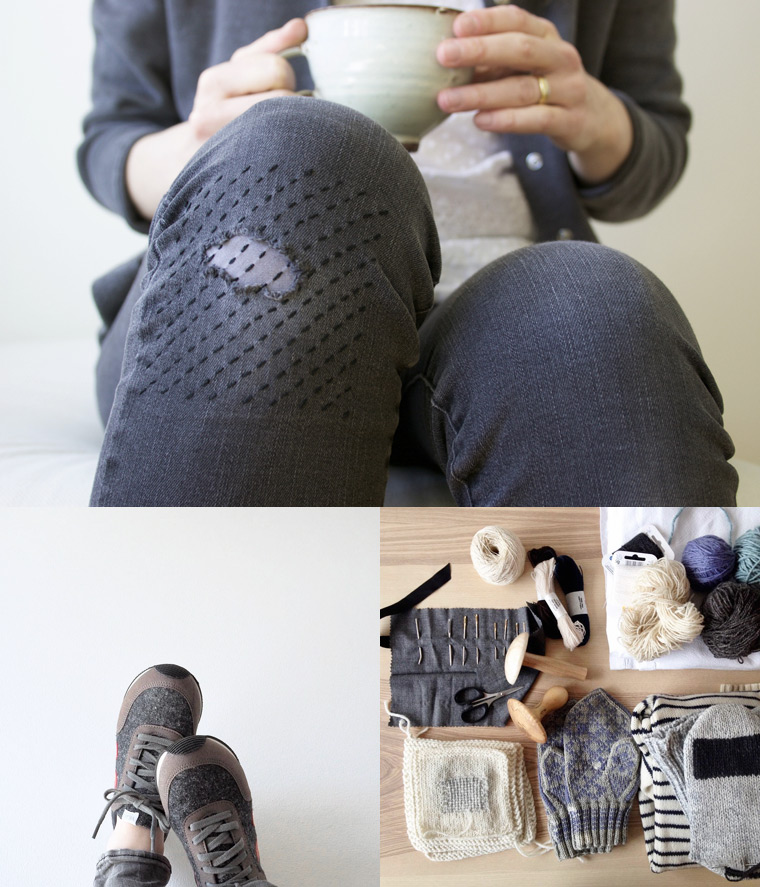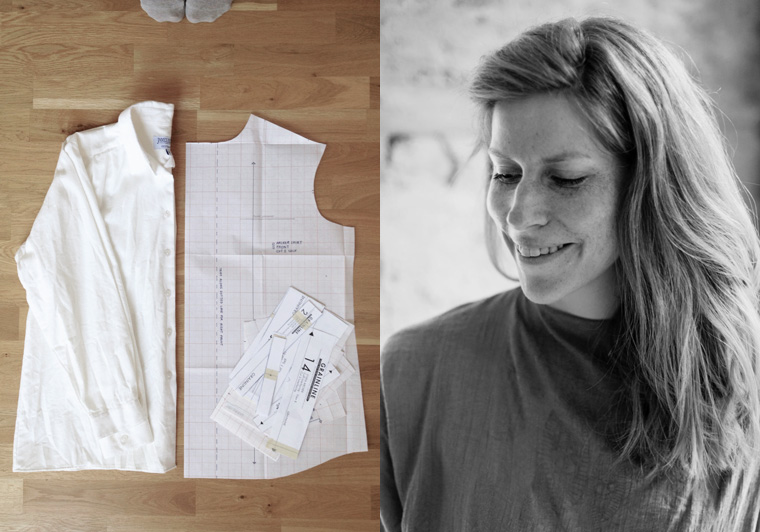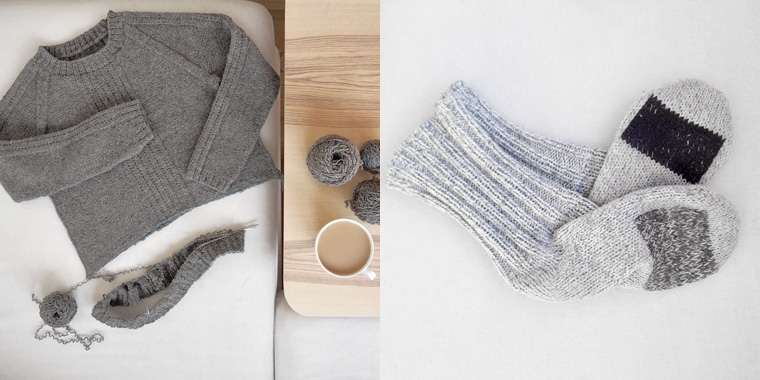
I am so excited to kick off the first instalment of Nordic Makers! If you’re wondering what that is, you can find the introduction here.
Louisa Bond and her site Worn Values continue to impress me. So of course I had to ask her to participate in this series. Louisa lives in the Norwegian capitol Oslo, and also happens to be an actual real life Philosopher. She writes about Slow Fashion in a holistic and passionate way. Always making sure that there are practical applications to her words. Her guides on how to darn knits and buy ethical shoes (part 1 and part 2), are some of my all time favorite DIY gems. Both meticulously researched and easy to understand. Luckily she agreed to answer my questions and I couldn’t be happier to share her thoughts with you.
You can find out more about Louisa on her Instagram here.
Hej Louisa! Tell us about yourself, Worn Values and your general practice?
I started the Worn Values blog last year as a way of exploring slow fashion and commit to a more sustainable wardrobe. But starting the blog has also been a personal search for creativity, courage and direction in my own life, as I try to find my way in the “real world” as a recent graduate.
I’ve been fascinated by the idea of a handmade wardrobe for a long time. But I couldn’t make sense of wanting to knit and sew my own clothes. When, after all, clothes are so readily available and cheaply priced in fast-fashion chain stores. I graduated in philosophy, but took some classes in economics last year and was immersed in the economic jargon of “comparative advantage” and “economies of scale”. Sewing and knitting your own clothes seemed to make no sense in those terms. On the other hand, I was also aware of the gruelling economic realities of the garment industry, with the Rana Plaza factory collapse in Bangladesh in 2013. I had also seen the Norwegian series Sweatshops [The series is available to watch here]. Where a few fashion bloggers travelled to Cambodia to experience first-hand the realities of garment workers lives.
I kept coming back to the same questions: what on earth has happened to our notion of value? Is the value of our clothes nothing more than a price tag? For me, knitting and sewing has to do with so much more than a garment’s price. It is about gaining control over fit and quality, learning practical skills, reconnecting to a heritage of craftsmanship, and just the satisfaction of being able to make something tangible and useful with my own two hands.
So, the blog started with this desire to make. Combined with the uneasy feeling that there is something dreadfully wrong with the fast-fashion industry. Trying to approach sustainability on a tight budget led me to re-discover the value of mending. Through the inspiration of people like Katrina Rodabaugh I realized mending can be a creative challenge in itself. So, I feel a gentle pull in that direction now.
Does being based in Norway have any impact on your making?
I think it does, though I haven’t properly reflected over it before. Thinking back to when I picked up knitting again in my early twenties, I remember feeling it was like connecting with home, with my Norwegian roots. At the time, I was studying design in London, but I was overwhelmed by the pace of the city and the competitiveness of the course. I longed for calm and quiet, crisp autumn air, the smell of pine woods and the comfort of thick woolly jumpers.
It’s funny, my making influence is very much tied to each of my grandmothers. My English grandma sewed most of her own clothes throughout her life, and I connect sewing with her and her Englishness. But knitting feels very Norwegian to me. All through my childhood my Norwegian grandma would keep the whole extended family supplied with woolly socks. I remember watching with fascination the speed of her knitting needles clicking away as she watched the news. Perhaps when I am a granny too, I’ll have some of her knitting speed.
I suppose, knitting is, and has been, so common in Norway that it was no big deal for me to pick it up and delve into it. Also, I can’t think of a better remedy for the cold and dark evenings of the Norwegian winter than curling up on the sofa under a rug, with a big cup of tea and knitting in hand.

The Nordic countries have strong historic traditions when it comes to knitwear and other fiber work. Is that something you draw from or think about in your work as a maker?
I do feel this sense of a rich heritage of wool and craftsmanship in Norway and Scandinavia. But I feel I have only barely scraped the surface. I love the stranded colour work of traditional Norwegian mittens and cardigans, but also how the tradition is kept alive as they are continually re-imagined.
But it is only fairly recently, within the last year or two, I have really become aware of Norwegian wool. A whole new world opened up to me as I listened to the Woolful podcast, stumbled across the Norwegian small-scale yarn producer Lofoten Wool, and started reading things like the Norwegian book Ren Ull. Slowly it dawned on me just how intricate the journey from sheep to yarn is. Now, I just want to learn more!
It’s a good testament to the work Ashley is doing, that we both connected to our local fiber through the Woolful podcast. For me it was all about the Gotland sheep. Getting back to the questions. Are there any challenges working with fiber and making in the Nordic countries or anything that you think is easier here?
I think it is easy in the sense that there are a lot of resources to tap into with that rich heritage of a long-standing knitting and fibre tradition. Over the last few years there seems to have been a massive resurgence in knitting, particularly, which is lovely. Hopefully that will bring with it a greater appreciation for the time and skill involved in making clothes in general, and a greater interest in local wool in particular.
In Norway, there is a lot of talk politically about the new green economy and how we might shift away from an oil-dominated industry to new, “green” industries. While all the focus seems to be on new technologies and big data. I wonder why there is not more recognition of wool as a natural and sustainable raw material as well.
I do think that knitting and other fibre crafts are sometimes waved aside as uninteresting or unimportant, like “just” a flimsy women’s hobby. But I hope, and think, that is about to change and that a growing appreciation of fibre crafts will breathe new life in the Norwegian and Scandinavian wool and textile industry.

What are you working on now?
Right now, I’m most focused on a jumper I’ve had on my needles for almost a year. Although I love the yarn and the pattern, I just can’t seem to get the fit right. So I’m re-knitting the bottom half for the second time now. The yarn is un-dyed Norwegian wool from Lofoten Wool – somewhat rough to knit, but I love the natural look and sturdy but soft quality of the fabric it creates. The pattern is the Imago raglan pullover by Yoko Hatta for Brooklyn Tweed’s Wool People 9.
To be spending so much time on one garment feels very foreign in all the busyness of our modern-day lives. But it is also strangely satisfying to allow myself to take the time it takes to get it right. It is healing somehow to be able to go back and re-do what went wrong.

Louisa Bond – Worn Values
Great interview and congratulations on launching this series! Looking forward to reading more!
Thank you! Happy to hear it :)
This was really interesting, Simone and Louisa! I really enjoyed reading about how you got started as a maker. I really like that you spent so long getting the fit right on that sweater. It is worth getting it right!
Love this blog – keep writing!
I will! Thank you!